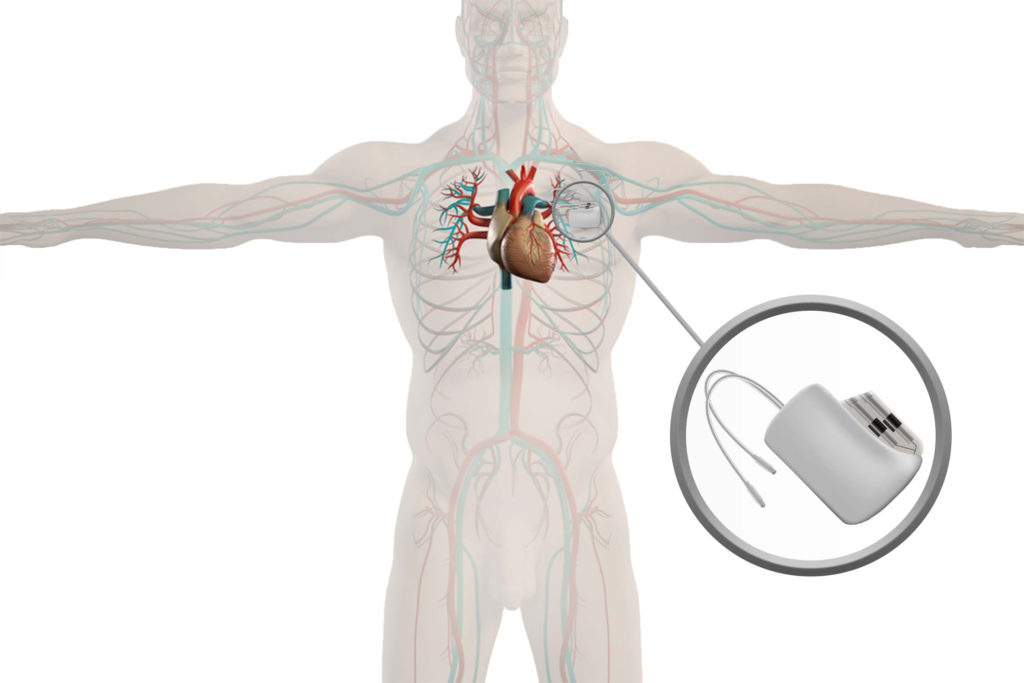
Pacemaker placement is the insertion of a small, electronic device in the chest to control irregular heart rhythms. A pacemaker uses low-energy electrical pulses to make the heart beat at a normal rate.
What is it?
A pacemaker placement is a procedure that inserts a small device into the chest. The device is called a pacemaker and is composed of a pulse generator, one or more leads, and an electrode on each lead. The procedure is intended to aid the heart electronically in beating at a reasonable rate. The purpose of the procedure is to prevent the heart from beating at a dangerously low rate. A pacemaker placement may be required in the event of heart beat and rhythm problems like Bradycardia (sinus node causing the heart to beat too slowly), Tachybrady syndrome (alternating fast and slow heartbeats), or Heart Block (electrical signal is delayed or blocked leaving the SA node).
What should I do to prepare?
Patients receiving a pacemaker implant may need to consult with their doctor about stopping certain medications before surgery. The patient should neither eat nor drink from midnight during the night before surgery until after the completion of the operation.
What happens during the process?
The procedure starts with the patient removing any jewelry or items that may cause interference. This task includes shaving of hair at the insertion site. The patient will then remove his or her clothing and change into an operation gown. The patient has an IV placed in his or her arm to receive medication and fluids as needed. The patient is then instructed to lie down on his or her back where he or she is connected to an electrocardiogram to monitor vitals. The IV includes a sedative to relax the patient, but the patient remains conscious during the procedure. The incision site is sterilized, and a local anesthetic is provided. An incision is made, and the sheath is inserted into a blood vessel, and a lead wire is advanced through the sheath and into the heart. The pacemaker generator will then be inserted through the incision after the lead wire is attached. Lastly, the incision is closed and bandaged.
What are the risks and potential complications?
There are several possible risks of the procedure including bleeding from the incision or catheter site, damage to the vessel at a catheter insertion site, infection, or pneumothorax (accidental puncturing of the lungs or a collapsed lung). Further complications can present in patients who are pregnant, allergic to latex, medications or have pain and difficulty when lying on an operation table for a long time.
Disclaimer:
All GlobeHealer Site content, including graphics, images, logos, and text, among other materials on the site are only for education purposes. This content is not intended to be a substitute for professional medical advice, and you should always contact your physician or qualified health provider for information regarding your health. Information on this site regarding the overview, diagnosis, and treatment of any kind should be looked at, in addition to the advice and information of your health care professional. Do not disregard medical advice or delay seeking treatment or medical advice due to information found on the GlobeHealer site.
If there is even the possibility that you may have a medical emergency, seek treatment, call your doctor, or call your local emergency telephone number immediately. GlobeHealer does not endorse being the first line of communication in case of emergency and does not endorse any specific test, physician, facility, product, procedure, opinion, or other information that is or may be mentioned on this site or affiliated entities. Reliance of any and all information provided by GlobeHealer, its employees, affiliations, others appearing on the Site under the invitation of GlobeHealer, or visitors of the site is solely at your own risk and is not the responsibility of GlobeHealer.
Image source: https://commons.wikimedia.org/wiki/File:Heart_diagram-en.svg
